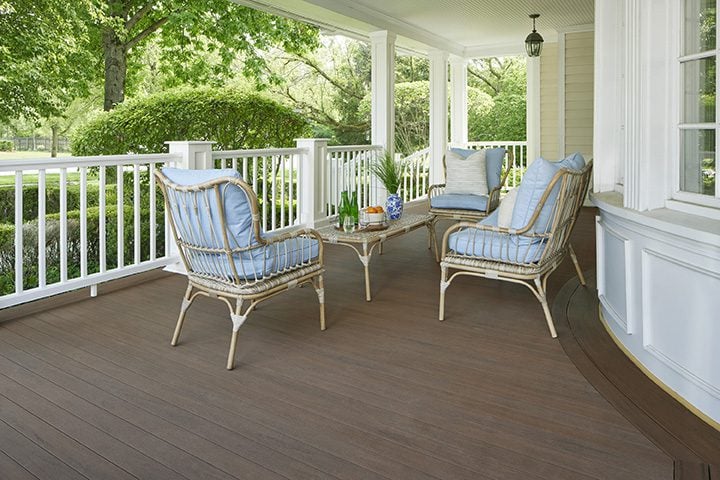When it comes to decking, homeowners and contractors often seek materials that combine aesthetics, durability, and ease of installation. Tongue and groove composite decking has been a popular choice for its seamless look and straightforward installation.
However, it’s crucial to understand its characteristics and limitations, especially in comparison to alternatives like PVC tongue and groove decking.
The Pitfalls of Tongue and Groove Composite Decking
Composite decking is known for its blend of wood fibers and plastic materials, offering a balance between the natural look of wood and the resilience of synthetic materials. Despite its advantages, one should be cautious about using tongue and groove composite decking, particularly for certain applications.
A significant concern with tongue and groove composite decking arises from the very nature of its construction. At AdvantageLumber.com, a leading provider of decking solutions, there is a conscious decision not to offer tongue and groove composite decking. The reason? The potential for water ingress.
Why Water Ingress is a Concern
The design of tongue and groove decking allows for a snug fit between boards, creating a smooth, continuous surface. However, this design can also trap water. Even though composite boards are resistant to moisture, the tongue and groove system can still allow water to seep through the joints. Once water gets in, it can be challenging to dry out, leading to several issues:
- Accelerated Rotting: While composite decking is generally more resistant to rot than softwoods like pine or cedar, it’s not entirely immune. The presence of wood fibers, particularly on the edges or the bottom of the deck boards that do not contain the solid plastic cap, can be susceptible to moisture. Prolonged exposure to trapped water can accelerate the deterioration of these fibers.
- Mold and Mildew Growth: Moist environments are conducive to the growth of mold and mildew, which can compromise the deck’s appearance and structural integrity over time.
The PVC Alternative
Recognizing these challenges with tongue and groove composite decking, it’s worth considering alternative materials like PVC (polyvinyl chloride) decking. PVC decking stands out for its lack of wood fibers, making it impervious to water and rot. Here are some advantages of PVC tongue and groove decking:
- Water Resistance: PVC is inherently resistant to water, making it an excellent choice for areas with high moisture exposure.
- Durability: PVC decking is known for its longevity and resistance to various elements, including rot, mold, and insects.
- Maintenance: PVC decks are low-maintenance, requiring only occasional cleaning to maintain their appearance.
Ideal Applications
It’s important to note that tongue and groove decking, whether composite or PVC, is particularly suited for covered applications. For example, using this type of decking for a porch with a covered roof is ideal. The roof provides additional protection from direct exposure to rain and snow, thereby reducing the risk of water-related issues.
Conclusion
In conclusion, while tongue and groove composite decking offers a visually appealing and easy-to-install option, its susceptibility to water ingress can be a significant drawback. At AdvantageLumber.com, the preference for PVC tongue and groove decking stems from its superior resistance to moisture and rot, coupled with its durability and low maintenance requirements. Remember, for the best results, consider using tongue and groove decking in covered porch areas. By making informed decisions about materials, homeowners and builders can ensure a beautiful, long-lasting deck that meets their specific needs and preferences.
